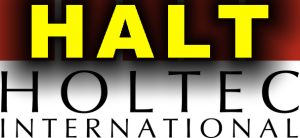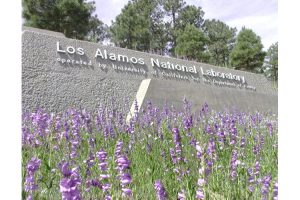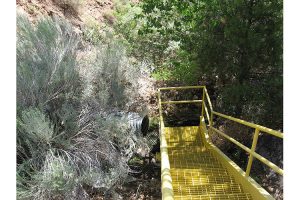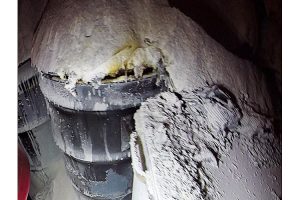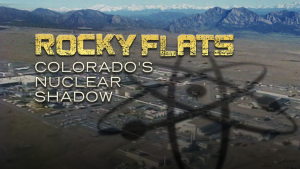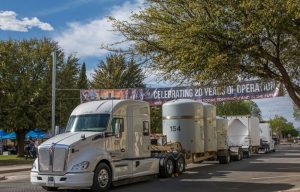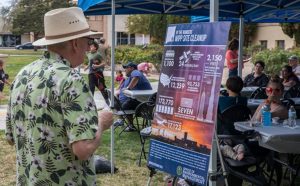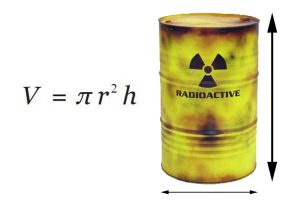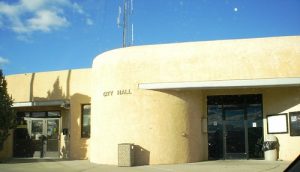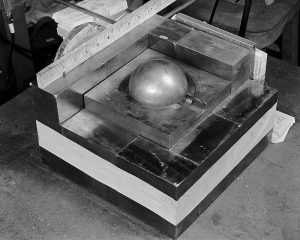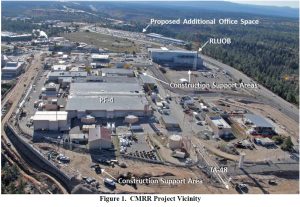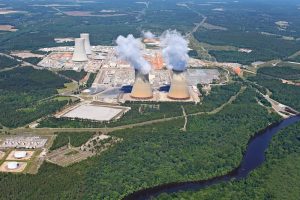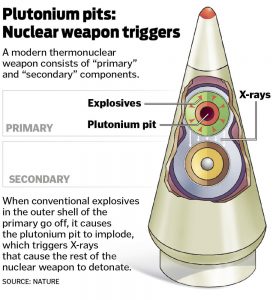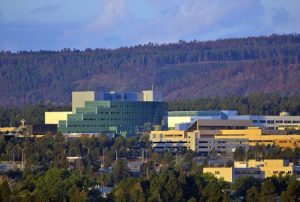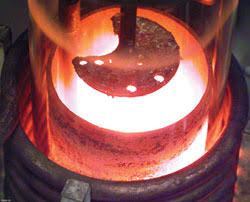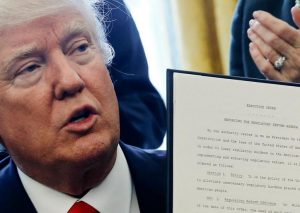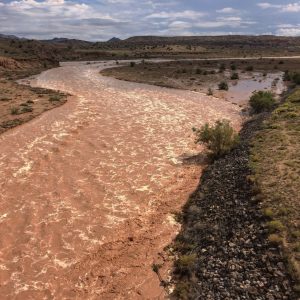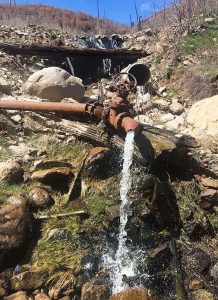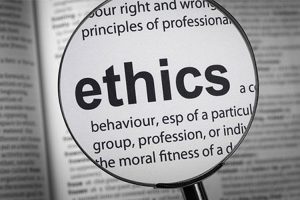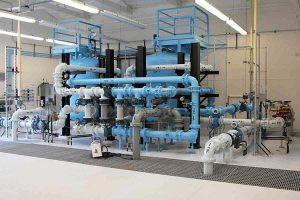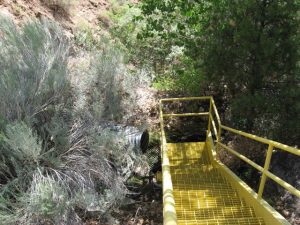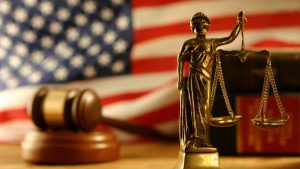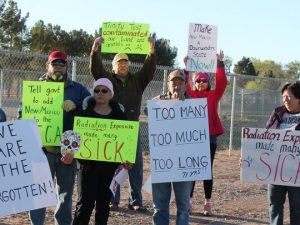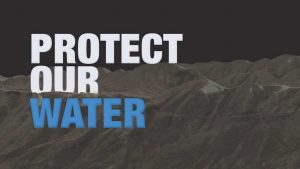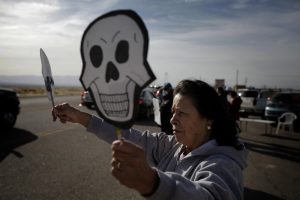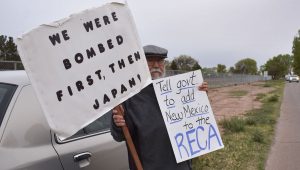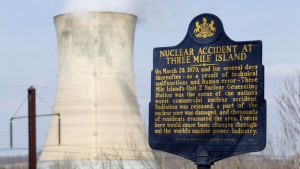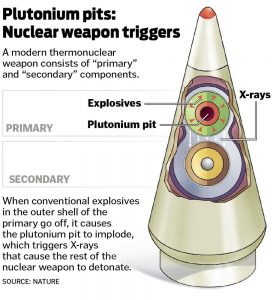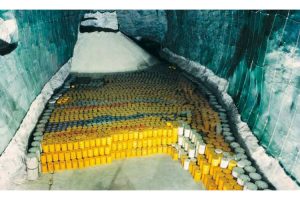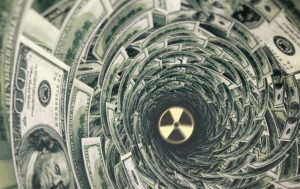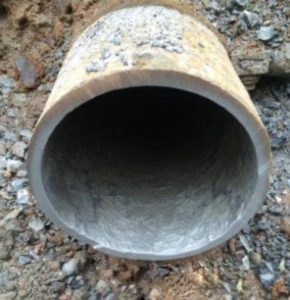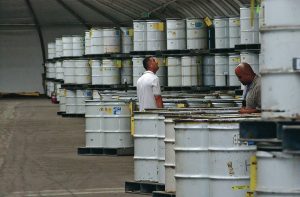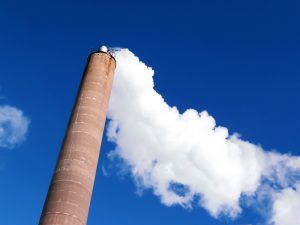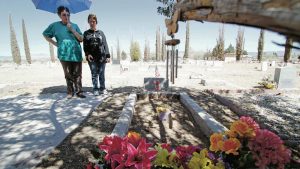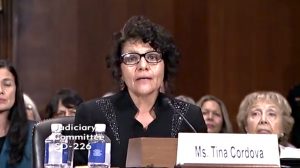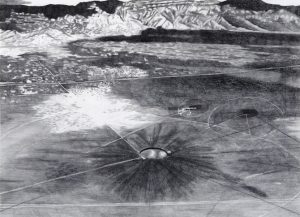![]() A Nuclear Regulatory Commission (NRC) board denied an evidentiary hearing to all of the public interest and industry groups that oppose the Holtec International proposal to open the world’s largest “interim” nuclear waste dump in southeast New Mexico for one of the most deadly materials on Earth – high-level radioactive waste. The 142-page decision is available at https://www.nrc.gov/docs/ML1912/ML19127A026.pdf
A Nuclear Regulatory Commission (NRC) board denied an evidentiary hearing to all of the public interest and industry groups that oppose the Holtec International proposal to open the world’s largest “interim” nuclear waste dump in southeast New Mexico for one of the most deadly materials on Earth – high-level radioactive waste. The 142-page decision is available at https://www.nrc.gov/docs/ML1912/ML19127A026.pdf 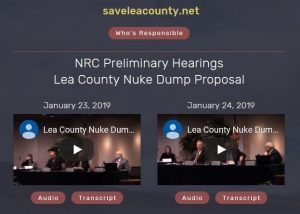
In January, the Atomic Safety and Licensing Board held a two-day hearing in Albuquerque to hear arguments from the twelve parties opposing Holtec’s application. This week’s decision was in response to that hearing. http://nuclearactive.org/nrc-holds-holtec-hearing-in-albuquerque-on-january-23rd/, http://nuclearactive.org/new-holtec-information-from-albuquerque-hearing-last-week/ and watch the hearing at https://saveleacounty.net/
The companies that operate nuclear power plants, located mostly east of the Mississippi River, own the waste. The Board did acknowledge the federal Nuclear Waste Policy Act does not allow the Department of Energy (DOE) to take title to the waste or pay for transportation or storage until there is a permanent dump.
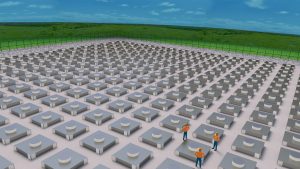 Although the Holtec application states that DOE or nuclear utilities could pay for the storage and transportation, the Board ruled against the legal challenges because “…the Board assumes Holtec will honor its commitment not to contract unlawfully with DOE to store any other spent nuclear fuel. Likewise, we assume DOE would not be complicit in any such unlawful contracts.”
Although the Holtec application states that DOE or nuclear utilities could pay for the storage and transportation, the Board ruled against the legal challenges because “…the Board assumes Holtec will honor its commitment not to contract unlawfully with DOE to store any other spent nuclear fuel. Likewise, we assume DOE would not be complicit in any such unlawful contracts.”
One of the parties opposing the application, Beyond Nuclear, has already asked the D.C. Court of Appeals to rule the proposal is illegal. http://www.beyondnuclear.org/centralized-storage/2019/5/7/beyond-nuclear-vows-to-fight-on-against-illegal-high-level-r.html
Other parties plan to appeal the Board’s denial to the four-member Commission, and the groups could then appeal to the federal courts. http://www.beyondnuclear.org/centralized-storage/2019/5/7/dont-waste-mi-et-al-press-release-public-interest-groups-den.html and https://www.riograndesierraclub.org/nrc-rejects-all-objections/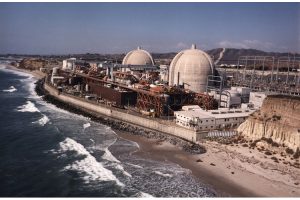
Among the other objections the board ruled against hearing are problems with the Holtec waste canisters. Donna Gilmore, with San Onofre Safety, is watchdogging the Holtec canisters stored in a similar configuration as those planned for Holtec’s New Mexico site. Gilmore said, “The NRC told the [Board] they have no problem with Holtec returning leaking canisters back to sender, yet neither the proposed New Mexico Holtec site nor the San Onofre site have a plan to deal with leaking canisters, let alone prevent radioactive leaks or hydrogen gas explosions. We cannot trust the NRC to protect our safety. It will be up to each state to stop this madness.” https://sanonofresafety.org/
Former U.S. Senator Jeff Bingaman of New Mexico has said that opening a consolidated interim storage facility without an operating 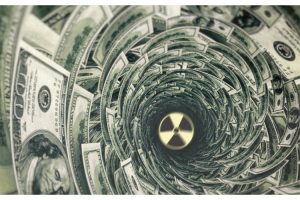 permanent repository risks so called “temporary” becoming de facto permanent. http://bioguide.congress.gov/scripts/biodisplay.pl?index=B000468
permanent repository risks so called “temporary” becoming de facto permanent. http://bioguide.congress.gov/scripts/biodisplay.pl?index=B000468
Although Congress has never funded interim storage, it is again considering changing the law and providing such funding. Please call your Representative and Senators now and tell them that New Mexicans oppose the Holtec proposal and that Congress should not change the law or provide any funding for interim storage in the Energy and Water Appropriations bill. https://www.senate.gov/senators/index.htm and https://www.house.gov/representatives/find-your-representative
Mother’s Day is Sunday. If you love your Mother Earth, please support the work of CCNS. Your tax-deductible contribution will make a difference. Join us with a monthly contribution of $5, $10, or more a month. Thank you!
1. Support clean water! On Tuesday, May 14th, the NM Water Quality Control Commission will reconsider its decision to deny the Communities for Clean Water (CCW) Motion to Vacate the Agency Decision and Remand the Petition for Review of DP-1132 (for LANL’s Radioactive Liquid Waste Treatment Facility). The hearing begins at 9 am in Room 307 of the State Capitol in Santa Fe. It is agenda Item No. 8 and may begin after 10 am. https://www.env.nm.gov/water-quality-control-commission/wqcc/ and http://nuclearactive.org/ccw-asks-wqcc-to-remand-lanl-permit-to-nmed-secretary/
Please note: NMED Hearing Officer, Felicia Orth, will provide a one-hour orientation session for the new members of the Water Quality Control Commission.
Please come and support CCW, of which CCNS is a founding member, in its quest for justice.
2. On May 29th, Los Alamos National Laboratory (LANL) will conduct an emergency preparedness exercise, which will last approximately five to six hours, beginning at 9 am. https://www.ladailypost.com/content/be-alert-emergency-preparedness-exercise-lab-may-29
3. On June 26th, the Environmental Protection Agency (EPA) will hold a public meeting and public hearing about the National Pollutant Discharge Elimination System (NPDES) permit for Kirtland Air Force Base. It will be held at the NM Veterans Memorial, 1100 Louisiana Blvd. SE, in Albuquerque. The public meeting will be held from 5:30 to 7 pm. The public hearing will begin at 7 pm. Details are available at: https://www.epa.gov/nm/united-states-air-force-draft-npdes-permit-no-nm0031216-0
4. The Nuclear Regulatory Commission (NRC) is proposing to hold a July 11th, and if necessary July 12th, pre-hearing conference to hear oral argument on standing and contention admissibility in the Interim Storage Partners, LLC (WCS Consolidated Interim Storage Facility) in Lubbock, Texas. Stay tuned for additional information.

